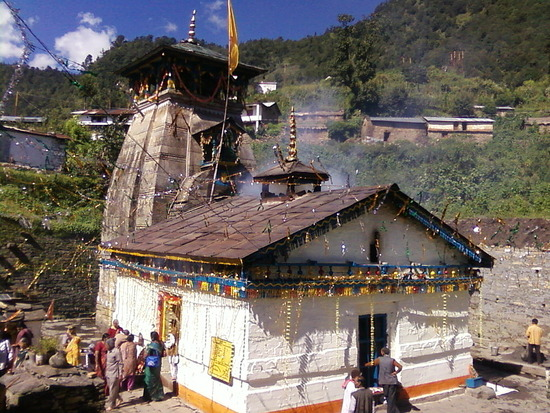Viewing the Shiva Parvathy Kalyana Utsavam blesses one with happy married life, children, prosperity and happiness!!!
The Celestial Shiva Parvathy Kalyana Utsavam took place in Mylapore Temple in Chennai on Panguni Uthiram day on Wednesday March 23 2016. Here Lord Shiva is known as Kapaleeswarar and Goddess Parvathy is known as Karpagambika.
Kolavizhi Amman
Utsava Moorty of kolavizhi Amman
Sthala Puranam of Kapaleeswarar Temple
Tri means 3
The Celestial Shiva Parvathy Kalyana Utsavam took place in Mylapore Temple in Chennai on Panguni Uthiram day on Wednesday March 23 2016. Here Lord Shiva is known as Kapaleeswarar and Goddess Parvathy is known as Karpagambika.
Kolavizhi Amman is the Kaval Devatha or
the Deity who is incharge of the Mylapore Region. There is a separate
temple for her in Mylapore. 'Kolam' means round shape and 'Vizhi' means eyesight/vision. Truly the Eyes of the Goddess are beautiful as seen in this photo below. Kolavizhi Amman is a form of Bhadrakali.
It is to be noted that even today first pooja even in Brahmotsavam in Mylapore is performed to kolavizhi amman before performing pooja to Kapaleeswarar. The Utsava Murthy of Kolavizhi Amman is taken out in procession first before 63 Nayanmargal procession in Brahmotsavam.
Utsava Moorty of kolavizhi Amman
Sthala Puranam of Kapaleeswarar Temple
Lord Shiva was imparting wisdom to Goddess Parvathy. Parvathy was distracted by a beautiful peacock and lost her concentration to the subject detailed by Lord Shiva. Lord Shiva cursed Parvathy that she would take birth as a peacock. She visited several places and finally reached Mylapore. Here she performed penance and Shiva Pooja under Punnai Maram/Tree. Hence this place is known as 'Mayilapur' which is colloquially known as Mylapore today(Mayil in Tamil means peacock).
Lord Shiva was pleased with Parvathy's penance and the celestial wedding ceremony of Shiva and Parvathy took place in Uthiram Nakshatra/Star in Panguni tamil month. Every year Brahmotsavam is held in the month of Panguni and kalyana utsavam is held on Uthiram Nakshatra star day.
Kapaleeswarar
Brahma Deva was proud that he had five faces and Lord Shiva wanted to teach him a lesson. Lord Shiva plucked the Fifth Head of Lord Brahma. The Fifth head stuck to Lord Shiva's hand as Skull which is known as Kapalam in Sanskrit/Tamil. Hence Lord Shiva here is known as Kapaleeswarar.
Karpagambal
Karpaga Vriksham in Tamil and Kalpa Vriksham in Sanskrit refer to the divine wish giving tree in heaven. Goddess Parvathy satisfies the wishes of her devotees here, hence she is known as Karpagambal.
Nakshatra Aarty to Kapaleeswarar
There is saying in Tamil that 'Kailaye Mayilai, Mayilaye Kailai'. It means that Kailash in Sanskrit or Kayilai in Tamil, the celestial abode of Lord Shiva is the same as Mylapore and Mylapore is the same as Kailash to Lord Shiva.
Agasthiar.org details that Mylapore is Kailash itself owing to the 7 Shiva Temples in Mylapore in their website link below,
The Seven Shiva Temples in and around Mylapore are as follows,
1) Karaneeswarar
2) Theerthapaleeswarar
3) Velleswarar
4) Virupaksheeswarar
5) Valeeswarar
6) Malleswarar
7) Kapaleeswarar
Shiva Parvathy Kalyana Homa/Havan Agni continously burning for 4 yugas!!!
Goddess Parvathy took many forms to perform penance and marry Lord Shiva since Kritha Yuga, the first of 4 Yugas. When Parvathy was born as the Daughter of Himavan, the King of Mountains in Himalayas Parvathy is known as Himadri sutha or Daughter of Himavan.
In Kritha yuga or the first of four yugas, the marriage of Lord Shiva and Parvathy in the presence of Lord Vishnu took place in Himalayas in a place currently known by Triyugi narayan in the State of Uttarkhand. The Temple is located on the way to Kedarnath. The Google map location of the same is as follows:
Yugi means Yuga
Narayan is the Vishnu Avatar who witnessed Shiva Parvathy wedding.
The Fire has been continuously burning in Kritha, Tretha, Dwapara Yugas. Hence the Temple is known as Triyuginarayan Temple.
The Homa/Havan conducted during the Shiva Parvathy wedding is still burning since the Kritha yuga here. Families reside in triyuginarayan to provide firewood and continue to protect the fire for the years to come. This tradition was rejuvenated by Adi Shankaracharya when he travelled to this temple. He nominated separate families for protecting the fire.
Even the Darshan of the Agni here will bless one with Happy married life, Children and happiness!!
Triyugi Narayan Temple with smoke coming out continously owing to Agni
Brahma Shila: It is the Shila/Peetam/Base on which Lord Shiva and Parvathy were seated when they performed the Kalyana Homa/Havan in Triyuginarayan Temple. Photo of the same below,







No comments:
Post a Comment